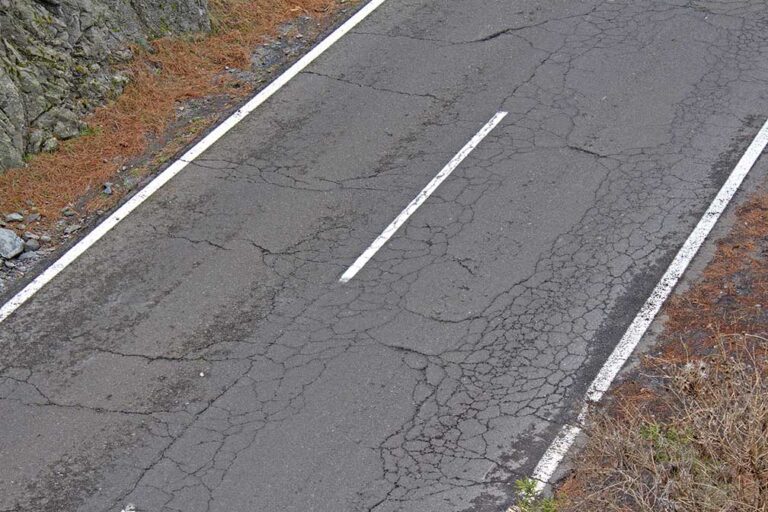PROVIDENCE, R.I. — New research has revealed that Rhode Island has the roughest roads in the United States.
The research by rugged computing solutions provider Getac analyzed road length and condition according to the International Roughness Index from the Federal Highway Administration (FHWA) to see which states had the roughest roads per 1,000 miles.
Rhode Island has the roughest roads of any state, with 45 miles of roughness per 1,000, according to the research. That’s more than 200% above the national average.
Connecticut and West Virginia take second and third place, with 41 miles and 37 miles of roughness per 1,000, respectively, Getac’s research showed.
Commenting on the findings, Christin Wang, director for global marketing at Getac, said: “Keeping goods moving is vital for any company’s supply chain, and technology has helped massively increase efficiency in planning and logistics. But road maintenance is an underlying and often overlooked factor that can hamper freight delivery and safety, potentially cause damage to a vehicle, and, in some cases, accidents.
New Mexico, South Dakota and Arizona have the roughest rural, urban minor and urban major roads, respectively, Getac officials found.
According to the FHWA, Rhode Island has 609 miles of roads in rough or very rough condition. Compared with total lane miles, this equates to 45 miles of roughness per 1,000, the highest in the United States.

Rhode Island’s rural roads are the second bumpiest in the nation — behind New Mexico — and its urban minor arterial roads rank fourth roughest.
Connecticut ranks second with 41 miles of roughness per 1,000, 183% above the national average. This equates to 1,871 miles of rough roads statewide.
The Constitution State’s major rural roads are in the roughest condition, ranking ninth nationally. Its urban minor arterial and urban major and minor roads are in the top 20.
West Virginia’s roads take third place as it has 37 miles of roughness per 1,000, 156% above the national average.
In total, West Virginia has 2,938 miles of roads in rough condition. The Mountain State’s rural roads rank third bumpiest nationally, and urban major and minor collector roads rank eighth.
Mississippi places fourth after data reveals the state has 32.3 miles of rough roads per 1,000, which is 123% above the national average. Mississippi has 5,049 miles of roads in rough condition.
The Magnolia State’s major rural roads are the fifth roughest in the country. Its urban minor arterial roads place 10th.
In fifth place is New Jersey, with 31.9 miles of rough roads per 1,000, 120% greater than the national average. This equals 2,691 miles of roughness across the state. The Garden State’s urban minor arterial roads place 12th roughest nationally, the state’s highest rank.
Maryland is sixth after recording 28 miles of rough road per 1,000. Maryland’s urban minor arterial and collector roads rank 13th and 12th roughest nationally.
Washington’s roads are seventh roughest, with 26.7 miles of roughness per 1,000. That’s 4,672 miles statewide. Its major rural roads are in the eighth-roughest condition nationally, with urban collector roads in the 11th.
Texas ranks eighth after logging 26.6 miles of rough roads per 1,000. With the longest roads in the country, this equates to 17,446 miles of roads in ‘rough’ or ‘very rough’ condition, making up one in seven of the national total.
Missouri ranks ninth with 26 miles of roughness per 1,000. The state has the seventh roughest major rural and minor urban arterial roads, with its urban collector roads ranking 13th in the United States.
Pennsylvania’s roads rank 10th roughest, with 25 miles of roughness per 1,000. This equals around 6,381 miles of roads in rough condition statewide. Pennsylvania’s rural roads were in the sixth roughest condition, and its urban roads ranked 18th nationally.
Of the three road types, New Mexico, South Dakota and Arizona have the roughest rural, urban minor arterial and urban collector roads in the United States, respectively, despite not appearing in the overall top 10.
“When on long journeys, devices can fail, with 35% of frontline workers reporting that batteries don’t last an entire shift, resulting in lost productivity, according to VDC Research Group. “It’s important that both managers and drivers of delivery fleets should have a device that allows them to keep up-to-date information in real-time between the driver and managers. Keeping a flow of information means potentially dangerous or risky routes can be avoided, and preventative repairs can be arranged as soon as possible.”
The Trucker News Staff produces engaging content for not only TheTrucker.com, but also The Trucker Newspaper, which has been serving the trucking industry for more than 30 years. With a focus on drivers, the Trucker News Staff aims to provide relevant, objective content pertaining to the trucking segment of the transportation industry. The Trucker News Staff is based in Little Rock, Arkansas.









Call BS. The ENTIRE I40 run through AZ and NM you gotta run left lane so you keep your axles under your damn truck. And Indiana…. I70 holy crap! I’ve driven all the ones on the list. These 3 state deserve top 10